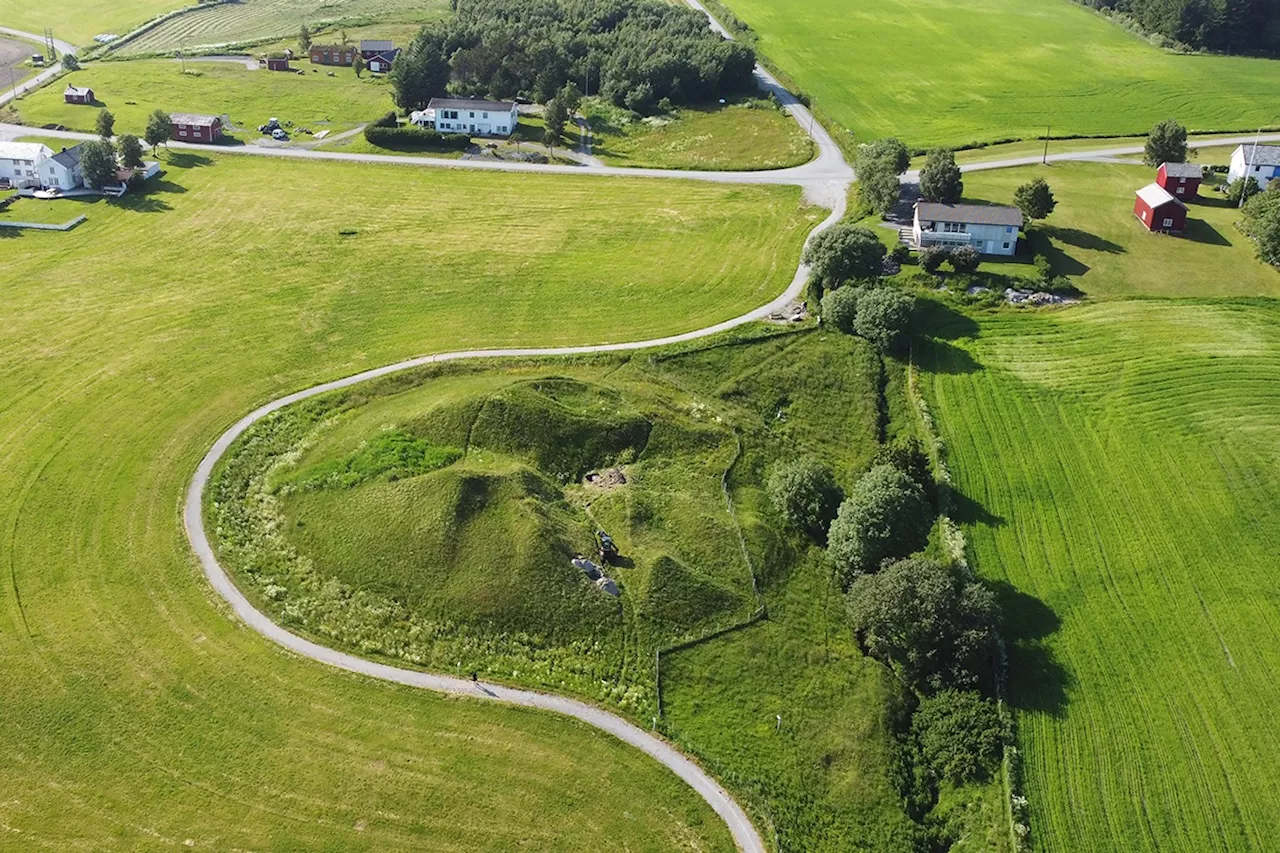Archaeologists have made an 'exciting' discovery regarding a large burial mound that may help rewrite the history of the Nordic region. The mound, located in Norway, has been confirmed to be the site of a ship burial dating back to A.D. 700, making it the oldest known ship burial in Scandinavia.
Archaeologists have made an 'exciting' discovery regarding a large burial mound that may help rewrite the history of the Nordic region. This summer, a team of researchers investigated the so-called 'Herlaugshagen' burial mound —located in the municipality of Leka, Trøndelag County, on the coast of central Norway—with the aim of dating it and confirming whether or not a ship was hidden within.
To the joy of the archaeologists, surveys revealed large rivets in the mound, confirming that it was indeed the site of a ship burial. Now, recent dating efforts have indicated that the mound was constructed around A.D. 700—prior to the Viking Age—sparking further excitement among the researchers, according to the Norwegian University of Science and Technology (NTNU). This date makes it the oldest known ship burial in Scandinavia (although there are burials in Vendel and Valsgärde in Sweden involving smaller boats that date to the 7th century). The Viking Age was a period spanning from the late 8th century A.D. to the mid-11th century A.D
Archaeologists Discovery Burial Mound Ship Burial Nordic Region History Dating Viking Age Scandinavia
日本 最新ニュース, 日本 見出し
Similar News:他のニュース ソースから収集した、これに似たニュース記事を読むこともできます。
 From arsenic to urine, archaeologists find artifacts on museum shelvesKristina Killgrove is an archaeologist with specialties in ancient human skeletons and science communication. Her academic research has appeared in numerous scientific journals, while her news stories and essays have been published in venues such as Forbes, Mental Floss and Smithsonian.
From arsenic to urine, archaeologists find artifacts on museum shelvesKristina Killgrove is an archaeologist with specialties in ancient human skeletons and science communication. Her academic research has appeared in numerous scientific journals, while her news stories and essays have been published in venues such as Forbes, Mental Floss and Smithsonian.
続きを読む »
 Archaeologists Dispute Claims of Ancient Human Burials and EngravingsA group of archaeologists argues that there is no convincing scientific evidence to support the claims that the ancient human relative Homo naledi deliberately buried their dead and engraved rocks in a South African cave.
Archaeologists Dispute Claims of Ancient Human Burials and EngravingsA group of archaeologists argues that there is no convincing scientific evidence to support the claims that the ancient human relative Homo naledi deliberately buried their dead and engraved rocks in a South African cave.
続きを読む »
 Archaeologists Use Cadaver Dogs to Find Ancient Burial SitesArchaeologists are using cadaver dogs to locate decaying bodies at burial sites, with some dogs finding bodies that are thousands of years old. The dogs have proven their ability to detect death long after burials have taken place, as evidenced by the discovery of a tragic expedition to California nearly 175 years ago. The pioneers became stranded in the Sierra Nevada mountains and built makeshift camps for survival.
Archaeologists Use Cadaver Dogs to Find Ancient Burial SitesArchaeologists are using cadaver dogs to locate decaying bodies at burial sites, with some dogs finding bodies that are thousands of years old. The dogs have proven their ability to detect death long after burials have taken place, as evidenced by the discovery of a tragic expedition to California nearly 175 years ago. The pioneers became stranded in the Sierra Nevada mountains and built makeshift camps for survival.
続きを読む »
 Scientists Discover New Method to Enhance Proton Transport in GrapheneScientists have found a way to speed up proton transport across graphene using light. The innovation could open up new avenues to producing green hydrogen.
Scientists Discover New Method to Enhance Proton Transport in GrapheneScientists have found a way to speed up proton transport across graphene using light. The innovation could open up new avenues to producing green hydrogen.
続きを読む »
 World's Oldest Living Aquarium Fish Older Than Previously ThoughtThe world’s oldest living aquarium fish is actually even older than scientists initially believed. According to an analysis by the California Academy of Sciences, the Steinhart Aquarium’s beloved Australian lungfish named Methuselah is estimated to be about 92 years old, with a high-estimate of over 100. Meet Methuselah Native only to two river systems in Australia, this type of lungfish can actually breathe air.
World's Oldest Living Aquarium Fish Older Than Previously ThoughtThe world’s oldest living aquarium fish is actually even older than scientists initially believed. According to an analysis by the California Academy of Sciences, the Steinhart Aquarium’s beloved Australian lungfish named Methuselah is estimated to be about 92 years old, with a high-estimate of over 100. Meet Methuselah Native only to two river systems in Australia, this type of lungfish can actually breathe air.
続きを読む »
 Google Docs: Hidden Features You Should Know AboutDiscover hidden features in Google Docs that can enhance your productivity and document creation process.
Google Docs: Hidden Features You Should Know AboutDiscover hidden features in Google Docs that can enhance your productivity and document creation process.
続きを読む »
